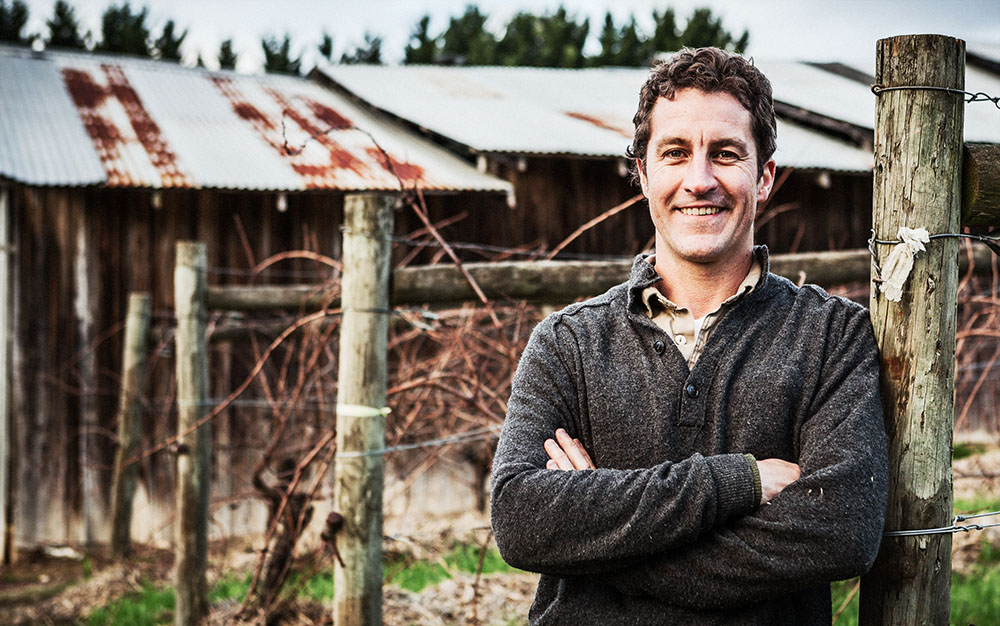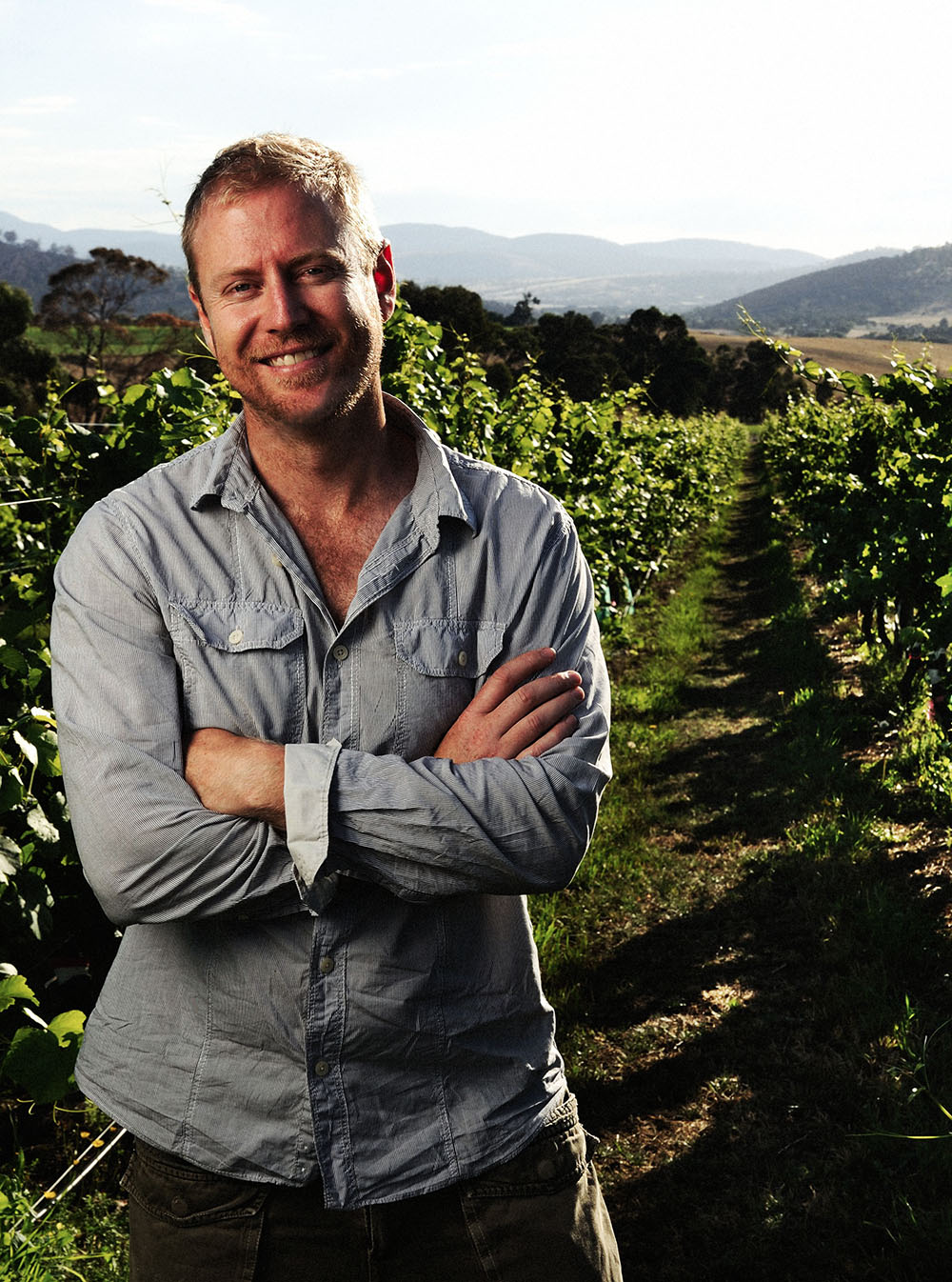
Remember back in the day when you asked people what wine they drank and they’d have a simple answer? As often as not, it was “Shiraz” — as in Australian Shiraz. After all, especially for Gen Xers, Aussie Shiraz was the equivalent of wine with training wheels. It was big, red and juicy — and it seemed to suit just about any occasion, with or without food, at least for some people.
What’s more, if you’re of a certain age, you might even remember when that answer would have been Aussie Chardonnay — quite possibly with a “Bin” moniker of some kind.
Few other New World wine regions have had such an impact on shaping what we drink as Australia. Back in the day, it was this great continent that introduced many consumers to the idea that wine could not only be approachable but also consistent between vintages.
Combined with that national characteristic of irreverent humour, wrapped in refreshing candidness, Australia was the first wine-producing country to take direct aim at the inherent snobbery that had defined wine’s image for so many years.
Moreover, the country has managed to chart a monumental shift over the last decade. The original plans had called for a massive expansion of Shiraz, based very much on its international success. Perhaps, not surprisingly, Aussie marketers had assumed Shiraz would just keep on going, ad infinitum; that consumers would never tire of their newfound darling. That was until Australian Shiraz was jilted by Argentinian Malbec.
In the early 2000s, Australia, which had blossomed on the wine scene in a relatively short span of time, embarked on an aggressive program of expanded plantings [Shiraz plantings?]. Somewhere along the line, however, all that changed, as the country’s winemakers took a turn towards more freshness, lower alcohol and more food-friendly bottlings.
Fatigue might have set in. Or, perhaps, more likely, a generation of flying winemakers brought home new discoveries from their adventures around the world.
No doubt it’s the latter that has sown the seeds for the new Australia, which cherishes its history but also seems to have a greater appreciation for its diversity and mosaic of contrasting regions. If this appreciation existed before, it was lost in the rush to maximize production and bolster exports at all costs.
Shiraz, which is grown in every principal region, will and always should be Australia’s wine. But the grape is no longer the monolith it once was, as other varieties are now coming to the fore. Wine is a creature of fashion, and shaped by fickle public taste, which makes it easy prey for marketers’ whims. Yet, Australia is witnessing the rebirth of once lesser varietals and there is a new breed of winemaker who is deeply committed to revolting against the homogeneity that, some argue, defined the region for far too long.
Grenache Ascendant
At a recent Vancouver tasting, it quickly became apparent that Grenache is a rising star. Interestingly, however, the variety is hardly a newcomer. As one of the original pillars of the early industry, it was once the most prevalent red grape grown in Australia. In fact, at one time, its plantings exceeded those of Syrah.
One reason Grenache was so ubiquitous was the role it played in the sweet and fortified Port styles that once ruled the Australian industry, particularly in the Riverland, which is still regarded as the industry’s backbone. Early growers loved the grape for its ability to flourish in heat and drought — factors that are once again coming to the fore, as a shifting climate continues to have a significant impact on wine around the world.
Grenache’s history dates from 1832, when it first arrived in Australia. But its principal promoter was Dr. Christopher Rawson Penfold, who tracked down what he felt were the best cuttings and imported them to Clare Valley in 1844. Later, its popularity spread to Barossa and McLaren Vale, as well, prolifically, to the Riverland, which emerged as the driver of the huge engine behind the country’s bulk industry.
In more recent years, the grape found favour with winemakers using it in ascendant “GSM” (Grenache/Shiraz/Mouvedre) blends, which very much helped rekindle interest as growers sought out old vines to propagate.
With strong connections to southwest France, Barossa’s Spinifex (whose wines are hailed by James Halliday as “superb”) is emblematic of new-style Australia. Decamped Kiwis and married couple Peter Schell and Magali Gely blend tradition and diligent sourcing with modern know-how. Thanks in great part to Gely’s family’s winemaking background in France, and the couple having worked there extensively, they combine the best of Old and New Worlds. Spinifex Esprit is predominantly old-vine Grenache, with Mataro and Cinsault, hand-harvested entirely from vines between 75 and 150 years old.
More French and biodynamic influences have helped shape the mantra of Ochota Barrels. The quirky but dedicated and highly respected duo of ex-punk rocker Taras Ochota and his wife, Amber, drew on their extensive world wine (and surfing) travels across Europe and North America to return to their roots in Adelaide Hills. Their focus is mainly on Grenache and Gamay.
After cutting his teeth at Nepenthe and Two Hands, Taras went on to work as a flying winemaker of some stature, sourcing mainly Italian varieties to wrangle into million-litre batches for Scandinavia’s Oenoforos. When he tired of that, it was time to head home and get real. The couple decided to concentrate on making super-premium Grenache and Shiraz in McLaren Vale and Barossa, using old vines from ideal single-vineyard sites. And they haven’t looked back.

Spinifex Esprit 2014, Barossa Valley and Eden Valley ($41)
Blend of Grenache (91%), Mataro (7%) and Cinsault (2%) from vines 75 to 150 years old, dry grown and hand-harvested. Perfumed and gently peppery, defined by intense fruit and a quite viscose palate. Raspberry and cherry, with leather and spice notes through the finish.
Yalumba Tri-Centenary Barossa Valley Grenache 2012 ($70)
From 128-year-old vines grown on a sandy site. Violet, cassis and floral notes before a mouth-filling and luscious palate with plum, dark cherry and chocolate notes, and approachable tannins, through a spicy, lengthy end.
Ochota Barrels Fugazi McLaren Vale Grenache 2016 ($40)
From 68-year-old vines. Floral and cherry notes up front, followed by a medium- to full-bodied palate with vibrant red berries and approachable tannins beneath elegant acidity and a vibrant, lingering finish with a little savoury element.
Mac Forbes Chardonnay 2015, Yarra Valley ($50)
From a higher site around 150 metres. Lifted notes of orchard fruit, with restrained vanilla-oak hints on the palate. Elegantly balanced with good acidity through tropical, apple and pear notes to the finish.
Voyager Broadvale Block 6 Chardonnay 2014, Margaret River ($55)
Citrus and mineral on the nose followed by a well-balanced, gently zesty palate. Intertwined with some creamy notes and oak, and alcohol well in check at 11.5 abv.
Pinot is Cool

It’s unlikely that Pinot Noir is a variety that you might think of being quintessentially Australian, but the variety was among the earliest vines imported in the mid-19th century. And its success was as spotty as elsewhere in the world. However, Pinot has recently been gaining ground, particularly in cooler climate areas, such as Mornington Peninsular, Geelong, Macedon Ranges and Yarra Valley — and Adelaide Hills, where it’s the third most planted grape after Sauvignon Blanc and Chardonnay. In the past, much of Australia’s Pinot production went into sparkling wines, including juice from Tasmania. Most of these areas lie in the southern, cooler-latitude growing areas, and most benefit from maritime influences. Tasmania, in particular, has increased its Pinot plantings in the last 15 years, while Mornington (near Melbourne) has been garnering plenty of international acclaim. Stonier Wines, one of Mornington’s original producers, first planted Pinot Noir in 1982.
Jansz Tasmania Premium Cuvée Méthode Tasmanoise NV ($28)
Wine lovers outside of Australia used to hear little about Tasmania because most of its production wound up in big-brand blends, most notably sparklers. This Chardonnay and Pinot Noir blend sports a persistent mousse and a fine stream of bubbles with pear and citrus in bright acidity.
Stonier Family Vineyards Pinot Noir 2015, Mornington Peninsula ($60)
Vibrant crushed red berries on top with cherry and strawberry hints precede a lively, fresh and juicy palate, with a hint of herbaceousness in the background. Well-structured with moderate tannins and spice through the finish.
Tolpuddle Pinot Noir 2015, Tasmania ($65)
Hand-picked and whole-bunch fermented in open fermenters. Lifted, aromatic red berry, fruit-forward notes with earthy hints followed by cherry and damson with a pleasing, savoury edge underpinned by spice and forest floor. Excellent structure, focused fruit, firm tannins and lingering fruit wrapped in bright acidity.
A Mediterranean Twist
Increasingly, these days when we see a lineup of Australian wines, chances are it will include not only more elegant and premium styles of Shiraz and more nuanced, less oaked Chardonnays from all over but also a smattering of unexpected — though by no means unknown — varieties. Grenache will likely be there, as well as Dolcetto, Nebiolo and others. And while there may well appear to be an Italian connection, it has less to do with postwar immigration to Australia than a quest for more Mediterranean varieties that make sense in a rapidly shifting world of climate change.
Also, it’s not just the varieties that are changing. Regional shifts are also afoot, like those in the Riverland. Long dismissed for its vast plantings and bulk wine reputation, the Murray River region is also seeing its share of forward-thinking experimentation, using grapes such as Fiano, Vermentino and Nero d’Avola, varieties known to survive and thrive in Mediterranean settings like Sicily.
What you’ll pick up on is a theme, a shift in style that yields a freshness — regardless of the variety — that maybe wasn’t previously apparent. It’s not about a desire to move away from oak but more about a need to use it more judiciously. As new regions come to the fore and old ones hone in on years of experience and tradition, it becomes increasingly apparent that Australia is far from monolithic. Today, it’s much more than the sum of its parts.
BK Skin-n-Bones White 2016 ($35)
From a cooler, 400- to 600-metre site in Adelaide Hills, and made from 100% Lobethal Savagnin. Yeasty, toasty, edgy notes on top with an herbal-, citrus- and saline-toned palate. Layered and appealingly provocative, with a slightly savoury-salty tannin finish.
Luke Lambert Crudo Syrah 2016, Yarra Valley ($42)
Varietal meaty and smoky notes on top precede a well-balanced, generous palate of red and black fruit and perky spice marked by vivacity and freshness.
Alpha Box & Dice Dead Winemaker’s Society Adelaide Hills Dolcetto 2015 ($26)
Forward notes of red berries, dried cherry and raspberry with a clean, fresh palate tinged with some herbal notes and a savoury streak. Underpinned by good acidity and wrapped in approachable tannins.
Torbreck RunRig 2014, Barossa Valley ($253)
From old, dry-grown, well over 100-year-old shiraz vines, plus some Viognier blended in. Appealing, lifted aromas of black fruit, cherry and plum followed by a plush and opulent palate with mulberry, blue fruit and anise over spicy notes. Some pepper notes and earthy, savoury elements in the relentlessly generous, lengthy finish.
